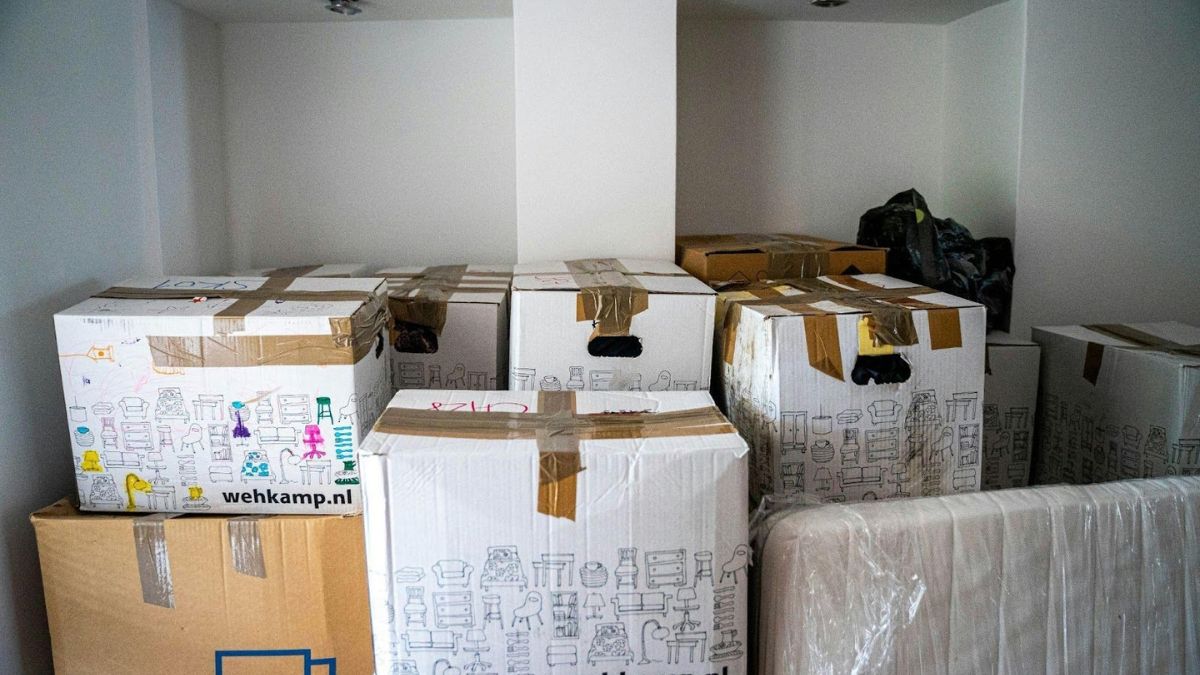BUSINESS
Tips for Collaborating with a Web Design Company for Your Project

In today’s digital age, a website is often the first point of contact between a business and its potential customers. A well-designed website can significantly enhance user experience, improve engagement, and drive conversions. However, collaborating with a web design company can be a daunting task, especially if you are unfamiliar with the design process or industry jargon. This article will provide you with practical tips to ensure a successful collaboration with a web design company for your project. From setting clear objectives to maintaining open communication, we will cover essential steps to make the process smoother and more efficient.
Define Your Objectives Clearly
Before you even start looking for a web design company, it’s crucial to define your project objectives clearly. Ask yourself what you want to achieve with your website. Are you looking to increase sales, generate leads, or provide information to your audience? By having clear goals in mind, you can communicate your vision effectively to the design team. According to a study by the Nielsen Norman Group, 70% of web projects fail due to a lack of clear objectives. Therefore, taking the time to outline your goals can save you time and resources down the line. Consider creating a brief document that outlines your objectives, target audience, and any specific features you want on your site.
Research Potential Web Design Companies
Once you have your objectives in place, it’s time to research potential web design companies. Look for firms that specialize in your industry or have experience with similar projects. Check their portfolios to gauge their design style and capabilities. According to Clutch, 92% of small businesses consider a company’s portfolio when making a decision. Additionally, reading reviews and testimonials can provide valuable insights into client satisfaction and the company’s reliability. Don’t hesitate to ask for references and reach out to past clients to learn more about their experiences. This research will help you shortlist companies that align with your vision and requirements.
Establish a Budget
Budgeting is a critical aspect of any project, especially when it comes to web design. Establish a budget that not only includes the design costs but also ongoing expenses such as hosting, maintenance, and updates. According to WebFX, the average cost of a website redesign can range from $3,000 to $20,000, depending on the complexity and features desired. Having a budget in mind will help you narrow down your options and avoid overspending. Be upfront with the design company about your financial constraints so they can provide solutions that fit within your budget. This transparency will lead to a more productive collaboration.
Communicate Effectively
Effective communication is paramount when collaborating with a web design company. Make sure to establish a primary point of contact on both sides to streamline communication. Use tools like Slack or Trello to keep all parties updated on project progress and deadlines. Regular check-ins can help address any issues early on and keep the project on track. According to a report by the Project Management Institute, poor communication contributes to project failure 56% of the time. Therefore, dedicating time to discuss progress, share feedback, and address concerns can enhance collaboration and lead to a successful outcome.
Be Open to Feedback
While you may have a clear vision for your website, it’s essential to be open to feedback from the web design team. Designers often have a wealth of experience and may offer insights that improve the overall usability and aesthetic of your site. According to the Design Management Institute, design-led companies outperform their competitors by 228%. This statistic underscores the importance of allowing designers to exercise their creativity and expertise. Be receptive to suggestions and maintain a collaborative mindset. However, ensure that any feedback is constructive and based on your original objectives.
Provide Necessary Resources and Information
To facilitate the design process, make sure to provide the web design company with all necessary resources and information. This includes brand guidelines, existing content, high-quality images, and any other materials that may be relevant to the project. A well-organized resource folder can save time and help the designers understand your brand better. Additionally, if you have specific content or imagery in mind, sharing these early in the process can streamline development. Remember that the more information the design team has, the better they can create a website that aligns with your vision.
Set Realistic Timelines
Setting realistic timelines is crucial for the success of your project. While it may be tempting to rush the web design process to launch quickly, this can lead to poor quality and unsatisfactory results. Work with the design team to establish a timeline that allows for adequate research, design, revisions, and testing. According to a survey by HubSpot, 38% of users will stop engaging with a website if the content or layout is unattractive. Therefore, taking the time to ensure quality is vital. Remember that a well-executed website is an investment that will pay off in the long run.
Be Prepared for Changes
Web design is an iterative process, and changes are often necessary as the project progresses. Be prepared for revisions and adjustments based on testing and feedback. According to a study by the Stanford University Web Credibility Research, website design significantly impacts credibility. Therefore, it’s essential to prioritize user experience and aesthetic appeal over sticking rigidly to your initial vision. Embrace flexibility and understand that these changes are part of the journey toward creating a successful website.
Test and Review Throughout the Process
Don’t wait until the final stages of the project to review the website. Testing and reviewing should be an ongoing process, allowing you to catch any issues early on. Engage in user testing sessions to gather feedback from actual users. According to the Nielsen Norman Group, usability testing can reveal a range of issues that may not be apparent to the design team. Regular reviews will ensure that the project stays aligned with your objectives and user needs. Collaborate with the design team to make necessary adjustments based on feedback and testing results.
Conclude with a Strong Launch Strategy
As you approach the completion of your project, it’s essential to have a strong launch strategy in place. This includes planning for marketing efforts, SEO optimization, and ensuring that all technical aspects are functioning properly. According to HubSpot, 61% of marketers say improving SEO and growing their organic presence is their top inbound marketing priority. Work with your web design company to implement best practices for SEO and ensure that your site is optimized for search engines. A well-planned launch can significantly boost your website’s visibility and user engagement.
Conclusion
Collaborating with a web design company can be a rewarding experience when approached correctly. By defining clear objectives, budgeting wisely, communicating openly, and being receptive to feedback, you can ensure a successful partnership that results in a stunning and effective website. Remember, the design process is collaborative and iterative; embrace flexibility and be prepared for changes along the way. Ultimately, investing time and effort into a well-executed web design project will pay dividends in terms of user engagement and business growth.
BUSINESS
When a Home Lets Go: The Strange Magic Hidden Inside Every Move

Moving is a pragmatic task: pack, transport, unpack. Behind the tape and cardboard is an experience that is much more powerful. Moving changes perception, arouses memories, and awakens the mind that is otherwise silent. A move does not merely mean a change of scene, but it is a change in personal gravity. It distorts the known, shakes off what is forgotten, and opens doors to reinvention that were not visible. This is the fascinating world inside every move, stranger and richer than most ever notice.
When walls start speaking
Homes hold stories the way trees hold rings. A worn patch on the floor, a sunny corner in the afternoon, a cupboard that always sticks, every detail remembers usage and presence. When a person begins packing to leave, the house reveals those memories all at once.
Objects move like dormant creatures coming to life. One can look at a necklace in a drawer and be reminded of a party they attended many years back. An old book brings back a lifelong forgotten. It is here that professional movers like Elate Moving tend to notice something extraordinary: people will find things in themselves that they did not even know they had lost.
The new home that rebuilds you
Entering a new home is entering a new reality. The brain, no longer familiar with the old design, suddenly becomes lost without the map. It must rebuild, even for the smallest things.
- Where does the morning light fall?
- Which corner feels calm?
- Where do keys naturally belong?
This puzzle-like stage sparks a burst of mental energy. The mind becomes sharper, more curious, more awake. Patterns shift without effort. A person who dislikes evenings may begin to enjoy slow sunsets from a new balcony.
A move is a surprisingly powerful architect of behavior. It quietly nudges people toward routines that suit their new environment, sometimes even changing how they think or feel. Strange and wonderful changes many notice during the first weeks after moving:
- Layouts and lights are little mysteries that one wants to solve.
- Old habits dissolve because the brain cannot rely on its usual autopilot
- New dreams and ideas emerge as the mind explores its new territory
This is the mind rewriting its own blueprint.
Objects that carry the pulse of the past
While sorting belongings, something special happens. Items stop behaving like simple objects; they begin acting like emotional time capsules. A chipped bowl becomes a reminder of a favorite person. The smell of the scarf is that of a past season of life. A notebook half-filled is like a promise yet to be fulfilled.
Relocation imposes decisions: what remains and what is meaningful other than price or purpose. This selection is a quiet form of self-discovery. In choosing what to bring into the new home, a person chooses what to bring into their future self.
When the new place finally breathes
One moment, some minute, insignificant, irretrievable, the new home always comes to life. It can be the first time the laughter is bounced off the walls. Perhaps it is waking up and realizing the place no longer feels unfamiliar. Or perhaps the air simply no longer feels strange.
Rituals create homes: it is important to place a plant by the window, find a place to read, and play music in every room. Space swallows up personality, rhythm, and warmth bit by bit. It begins to learn its residents the way the previous home once did.
Final say
Moving does not only mean moving the place but also moving the identity. Houses recall, set free, and reform people who dwell within them. Each step is a silent change, one that welcomes change and opens up the true priorities. When one enters a new house, it is not only about entering into a new space but also a new stage of who he/she is becoming.
BUSINESS
Which Gold Jewellery Mississauga Designs from Al-Karam Reflect Pakistani, Indian, or Middle Eastern Heritage Most Beautifully?

Al-Karam is a name synonymous with exquisite gold jewellery mississauga that beautifully captures the essence of South Asian and Middle Eastern traditions. From intricate bridal sets to statement pieces for festive occasions, the store offers designs that celebrate heritage while keeping modern tastes in mind.
In this article, we explore which Al-Karam designs most authentically reflect Pakistani, Indian, and Middle Eastern heritage, and why these pieces are cherished by locals for weddings, engagements, and cultural celebrations.
Traditional Pakistani Bridal Sets
Pakistani bridal jewellery is known for its elaborate designs, heavy craftsmanship, and elegant detailing. Al-Karam’s collections include Kundan and Polki sets featuring necklaces, earrings, maang tikka, and bangles that exude regal charm.
These sets often use intricate filigree work and gemstones in red, green, and gold tones, reflecting traditional Pakistani aesthetics. For brides searching for authentic gold jewellery mississauga, these sets perfectly blend heritage with high-quality craftsmanship.
Indian Gold Jewellery with Cultural Significance
Indian jewellery is rich with symbolism, often incorporating motifs like peacocks, lotus flowers, and intricate geometric patterns. Al-Karam’s Indian-inspired pieces reflect this artistry through detailed goldwork and gemstone embellishments.
From lightweight daily wear to heavy bridal ensembles, these designs are ideal for cultural celebrations. Engagements and weddings shine with engagement rings mississauga that include classic Indian design elements, making each ring both meaningful and timeless.
Middle Eastern Elegance in Gold
Middle Eastern jewellery is renowned for its opulence and ornate detailing. Al-Karam offers pieces featuring Arabic calligraphy, geometric patterns, and bold gemstone combinations that reflect this rich heritage.
For women looking to celebrate Middle Eastern traditions, these pieces provide a perfect combination of luxury and cultural authenticity. Their elegance makes them suitable for weddings, Eid, and other festive events, complementing both traditional and modern attire.
Statement Necklaces for Cultural Celebrations
One of the standout features in Al-Karam’s collection is the statement necklace. These pieces are often layered, combining gold chains, kundan work, or gemstone accents that immediately draw attention.
Such necklaces are popular across Pakistani, Indian, and Middle Eastern communities, particularly for weddings and festive events. Pairing them with matching bangles and earrings completes the heritage-inspired look, offering an unforgettable ensemble of gold jewellery mississauga.
Bangles and Bracelets Reflecting Tradition
Bangles and bracelets play a central role in South Asian and Middle Eastern cultures. Al-Karam offers a wide variety of designs, from delicate gold bangles to heavily embellished sets.
These pieces often include intricate carvings, meenakari work, and small gemstone details, making them culturally significant while remaining stylish. They are frequently paired with bridal ensembles or worn during festive occasions to enhance the overall traditional appearance.
Earrings That Define Heritage
Earrings are often the highlight of any cultural outfit. Al-Karam offers designs such as jhumkas, chandbalis, and arabesque-inspired pieces that capture the essence of heritage while fitting modern fashion trends.
The attention to detail in these earrings allows them to complement engagement rings mississauga and other jewellery, creating a cohesive look that reflects Pakistani, Indian, or Middle Eastern aesthetics.
Maang Tikka and Headpieces
For brides and festive occasions, maang tikka and headpieces are iconic. Al-Karam designs feature gold bases with gemstone accents, reflecting the intricate artistry of South Asian and Middle Eastern cultures.
These headpieces perfectly complete bridal looks, ensuring that traditional elements are celebrated while matching other gold jewellery mississauga items like necklaces and earrings.
Customizable Heritage Designs
Al-Karam also offers customization options for those who want a personal touch. Customers can work with designers to incorporate specific cultural symbols, favorite gemstones, or family heirloom inspirations into their jewellery.
Custom engagement rings mississauga and gold sets allow buyers to merge personal significance with traditional design elements, creating a one-of-a-kind piece that honors heritage while maintaining individuality.
Combining Modern Trends with Tradition
While Al-Karam focuses on traditional aesthetics, many designs integrate modern sensibilities. Lightweight gold chains, minimalist bangles, and contemporary gemstone placements make heritage-inspired jewellery suitable for daily wear as well as special occasions.
This balance ensures that gold jewellery mississauga remains wearable and stylish, appealing to younger generations who appreciate tradition without sacrificing modernity.
Conclusion Celebrate Heritage with Al-Karam
Al-Karam’s gold jewellery collection in Mississauga stands out for its dedication to Pakistani, Indian, and Middle Eastern heritage. From bridal sets and engagement rings mississauga to statement necklaces, bangles, and earrings, each piece is a testament to rich culture and exceptional craftsmanship.
For anyone looking to invest in gold jewellery mississauga that celebrates tradition, Al-Karam provides an unmatched combination of authenticity, style, and timeless elegance—making every special occasion truly memorable.
BUSINESS
How Business Consulting Services Support Both Buyers and Sellers Through the Negotiation Process

Negotiating the sale or purchase of a business can be one of the most complex and high-stakes stages in any transaction. Both sellers and buyers must balance expectations, assess risks, and make informed decisions to achieve fair outcomes. Professional business consulting services provide the guidance, structure, and expertise needed to navigate negotiations smoothly, whether you are looking to buy a business Toronto or sell a company.
Companies like Robbinex, located at 8 Christie St, Grimsby, ON L3M 4H4, Canada (+1 289-235-7552), specialize in offering tailored consulting solutions that help clients maximize value, minimize risk, and complete transactions efficiently.
Understanding the Negotiation Landscape
Negotiations in business transactions involve much more than simply agreeing on a price. Sellers want to maximize value, while buyers aim to secure a fair deal with minimal risk. Business consulting services provide clarity on each party’s objectives, priorities, and constraints.
By establishing a structured framework for negotiation, consultants reduce the likelihood of miscommunication, ensuring discussions remain professional and productive. This approach also helps both sides approach talks with confidence and a clear understanding of potential outcomes.
Preparing Financial Insights
Successful negotiations depend heavily on accurate financial data. Business consulting services help sellers prepare detailed financial statements, cash flow analyses, and profitability reports that reflect the true value of the business.
For buyers, consultants analyze these financials to assess risks, identify opportunities, and determine fair pricing. With well-prepared information, both sides enter negotiations grounded in fact rather than speculation.
Aligning Goals Between Buyers and Sellers
Misaligned expectations can derail even promising deals. Consultants work to align goals, clarify priorities, and manage expectations on both sides.
For instance, a seller may be focused on quick closure, while a buyer is looking for favorable payment terms. Business consulting services mediate these differences, helping both parties find common ground that allows negotiations to progress efficiently.
Risk Assessment and Mitigation
Negotiations often uncover potential risks—unforeseen liabilities, operational gaps, or regulatory issues. Experienced consultants identify these risks early, advise on mitigation strategies, and incorporate safeguards into negotiation terms.
This proactive approach reassures buyers considering to buy a business Toronto, while also protecting sellers from potential post-sale disputes or liabilities.
Strategic Negotiation Techniques
Professional consultants employ proven negotiation techniques to maximize value for their clients. This may include:
- Presenting competitive market data to support pricing
- Structuring phased payments or earn-outs
- Offering flexible terms that satisfy both parties
By guiding clients on strategy and timing, consultants help create win-win agreements that are more likely to close successfully.
Facilitating Transparent Communication
Transparency is essential for building trust during negotiations. Business consulting services ensure that communication is clear, factual, and consistent.
They act as intermediaries, managing sensitive discussions and helping both sides address concerns without creating friction. This reduces misunderstandings and accelerates decision-making.
Supporting Emotional Intelligence
Negotiations can be stressful, emotional, and high-pressure. Consultants help both buyers and sellers maintain perspective, manage emotions, and make rational decisions.
By coaching clients on negotiation etiquette, tone, and body language, business consulting services ensure that discussions remain professional, respectful, and productive.
Documenting Agreements and Contingencies
Clear documentation is crucial for avoiding disputes after the deal closes. Consultants assist in drafting term sheets, purchase agreements, and contingencies that reflect negotiated terms accurately.
This attention to detail protects all parties and provides a roadmap for smooth execution post-closing.
Guiding Post-Negotiation Steps
Negotiation is only one phase of the transaction. Consultants continue to support clients with transition planning, integration strategies, and ongoing advice to ensure that the agreed terms are implemented effectively.
For buyers looking to buy a business Toronto, this guidance ensures operational continuity, while sellers benefit from a structured handover that maintains the business’s value.
Conclusion: Negotiating with Confidence
Effective negotiation is a critical component of any business transaction. By leveraging professional business consulting services, both buyers and sellers can navigate the complexities with clarity, confidence, and strategic insight.
Working with trusted experts like Robbinex (8 Christie St, Grimsby, ON L3M 4H4, +1 289-235-7552) ensures that every stage of the negotiation process—from financial assessment to post-closing transition—is handled with professionalism, transparency, and a focus on long-term success.
-

 TOPIC1 year ago
TOPIC1 year ago7 Expert Tips For Choosing The Best Basement Renovation Companies
-

 TOPIC5 months ago
TOPIC5 months agoWhy Greece Katz Martian Has Everyone Talking in 2025
-

 BUSINESS7 months ago
BUSINESS7 months agoTop 5 Features of Sowix Online That Every User Should Know About
-

 TOPIC6 months ago
TOPIC6 months agoTop Features of BetterThisWorld .com You Need to Know About
-

 FINANCE10 months ago
FINANCE10 months agoHow TraceLoans Can Simplify Your Finances
-

 BIOGRAPHY10 months ago
BIOGRAPHY10 months agoFrom Reality Star to Business Mogul: Prince Narula Digital PayPal
-

 EDUCATION6 months ago
EDUCATION6 months agoThe Evolution of Pi123: How It Became a Must-Have Tool
-

 TOPIC7 months ago
TOPIC7 months agoSabsastaa.com: Your Ultimate Guide to Budget Shopping and Savings
